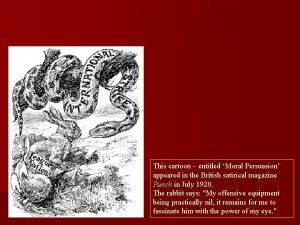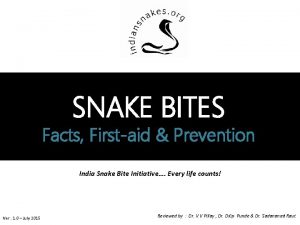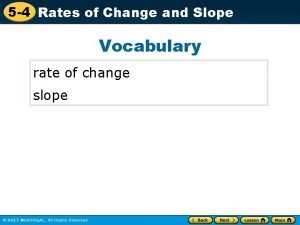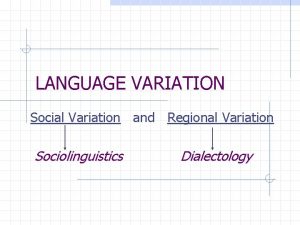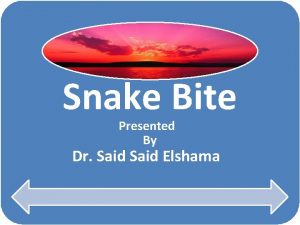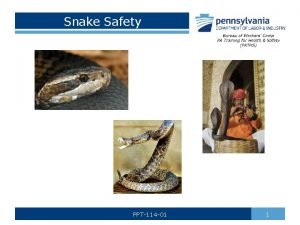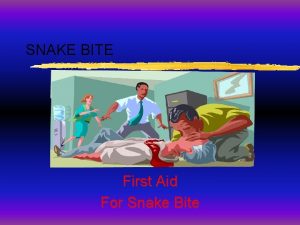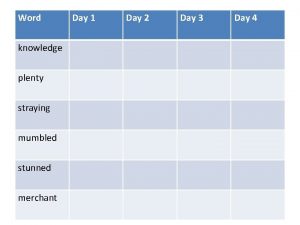Variation in Straying Patterns and Rates of Snake









































- Slides: 41

Variation in Straying Patterns and Rates of Snake River Hatchery Steelhead Stocks in the Deschutes River Basin, Oregon Richard W. Carmichael and Tim Hoffnagle Oregon Department of Fish and Wildlife La Grande, Oregon

Presentation Outline • Management issues • History of straying into the Deschutes River Basin • Study objectives and methods • Stock specific stray rate comparisons • Stock specific temporal and spatial straying patterns • Factors influencing straying • Summary and conclusions

Management Issues • Mid Columbia steelhead listed as threatened under Federal ESA with the Deschutes population considered an important component of the ESU. • Hatchery strays comprise a substantial proportion of the harvest and recoveries at hatchery collection sites. • Deschutes steelhead population considered at high risk of extinction due to abundance of stray hatchery fish (Chilcote 2001).

Management Issues • NMFS Hatchery Biop Conservation Recommendations for ODFW include “work with other fisheries managers to address the problems of Snake River Steelhead straying into the Deschutes River”. • Oregon’s Mid-Columbia River Steelhead Recovery Plan identifies Snake River hatchery steelhead strays as a primary threat to the Deschutes and John Day steelhead populations. • ICTRT viability assessments rate the spawner composition as high risk for Deschutes population because of the high proportion of out-of-DPS stray spawners.

Origin of Steelhead Escapement Above Sherars Falls


Recent 10 -Year Average Proportion of Natural Spawners That Were Snake River Strays (ICTRT) Population Spawner Abundance Natural Hatchery Snake River Hatchery Stray Proportion Deschutes River Eastside 975 526 35% Deschutes River Westside 337 100 29% Lower Mainstem John Day River 1620 180 10% North Fork John Day River 1601 139 8% Umatilla River 1398 74 5%

Objectives • Assess the magnitude of straying and the origin of Snake River hatchery steelhead strays in the Deschutes River. • Determine stray rates into the Deschutes River for all Snake River hatchery steelhead stocks. • Characterize distribution (time and space) of each stock of Snake River hatchery strays within the Deschutes River Basin. • Examine factors that may influence straying rates and patterns. Definition: We defined a Deschutes River stray as any fish recovered in the Deschutes River.

Methods • Assemble and analyze CWT release and recovery data for all Snake River steelhead hatchery releases. • Develop mark-to-unmark expansion factors to account for all production releases. • Calculate stray rates into the Deschutes River by code, release location, and run year for each Snake River hatchery stock. • Calculate total hatchery contributions to the Deschutes River by run year for each stock and basin of release. • Compare stray rates among Snake River steelhead hatchery stocks.

Snake River Hatchery Steelhead Stocks Lyons Ferry Dworshak B Pahsimeroi A Sawtooth A Wallowa Hatchery Imnaha River Hells Canyon A

Deschutes River Mouth (RK 0) Kloan (RK 11) Macks Canyon (RK 39) Sherars Falls (RK 69) Warm Springs National Fish Hatchery (RK 154) Pelton Trap (RK 161) Round Butte Fish Hatchery

Coded-Wire Tag Groups

Coded-Wire Tags Years Number tagged Total released Percent tagged Dworshak B 1974 -1997 4, 429, 340 36, 041, 922 12. 3 Hells Canyon A 1985 -1995 476, 375 3, 911, 455 12. 2 Imnaha River 1985 -1997 897, 287 2, 691, 045 33. 3 Lyons Ferry 1987 -1997 534, 813 684, 381 78. 1 Pahsimeroi A 1976 -1997 2, 495, 772 12, 905, 758 19. 3 Sawtooth A 1985 -1997 1, 036, 204 6, 736, 447 15. 4 Wallowa Hatchery 1980 -1997 3, 041, 277 9, 621, 618 31. 6 Stock

Annual Stray Rates – Dworshak B

Annual Stray Rates – Hells Canyon A

Annual Stray Rates – Imnaha River

Annual Stray Rates – Lyons Ferry

Annual Stray Rates – Pahsimeroi A

Annual Stray Rates – Sawtooth A

Annual Stray Rates – Wallowa Hatchery

Deschutes River Stray Rates

Distribution – Time and Space

Distribution – Dworshak B

Distribution – Hells Canyon A

Distribution – Imnaha River

Distribution – Lyons Ferry

Distribution – Pahsimeroi A

Distribution – Sawtooth A

Distribution – Wallowa Hatchery

Potential Factors Influencing Straying – – – Incubation, Rearing, and Release Strategies Release Location Stock Origin Seaward Migration Pathways (Inriver –Transported) Columbia River and Deschutes Water Temperatures

Significantly Correlated Stray Rates

Release Location Influence Stray Rates into Mid-Columbia Basin Tributaries, 1990 -2005 Brood Years STRAY RATE (%) 20 Big Canyon Facility Wallowa Fish Hatchery 15 10 5 0 1993 1996 1999 BROOD YEAR 2002 2005

Adult PIT-tag Stray Analysis 2007 -08 and 08 -09 Run Years Ø NOAA transport tag groups • Released at Lower Granite Dam as smolts in 2005, 2006, and 2007 • Return to the river group (RR) • Barge transported group (BR) Ø Queried adult detections at Bonneville (N) Ø Compared proportion of Bonneville adults that were detected as strays from barged and return to river groups • z-tests: statistical test to compare detection rates of two groups (RR vs. BR or hatchery vs. natural) • John Day River: Mc. Donald Ford • Deschutes River: Sherars Falls – Unknown detection efficiency at the Deschutes River John Day sites

Ford s

Adult Steelhead Detections of Transport Study Groups - 2007 -08 and 2008 -09 Run Years Bonneville Dam (N) Smolt Group John Day River Deschutes River Hatchery Wild All Hatchery Wild % Barged 2007 -08 918 343 1, 261 29 17 3. 6 64 10 5. 9 In-River 2007 -08 151 77 228 1 0 0. 4 Barged 2008 -09 1584 612 2196 23 15 1. 7 144 40 8. 4 In-River 2008 -09 152 87 239 0 0 0. 0 4 0 1. 6

Stray Rates Into the Deschutes for Transported and In-River Migrants % Run Year

Stray Rates Into the John Day for Transported and In-River Migrants % Run Year

Statistical Results (z-tests) Ø Returning adults that were transported as smolts (BR) stray at greater rates than those that were allowed to migrate the river corridor (RR). • % detections of BR fish > % RR fish in John Day, P = 0. 003 • % detections of BR fish > % RR fish in Deschutes, P < 0. 001 Ø Transported hatchery adults stray at greater rates into the Deschutes River than transported natural adults, P < 0. 001 Ø Similar rates of straying of transported hatchery and natural adults into the John Day River. There was no significant difference, P = 0. 19

Summary • Snake River hatchery strays are considered a significant threat to viability of Oregon’s Mid-C steelhead populations, model results indicate reduction in hatchery spawners will provide a significant productivity improvement. • We observed highly variable patterns in stray rates, distribution, and timing between stocks. • Snake River hatchery steelhead contribute substantially to tribal and sport fisheries in the Deschutes River. • Wallowa Hatchery and Hells Canyon A steelhead had the highest mean stray rate into the Deschutes River.

Summary • Wallowa Hatchery and Hells Canyon A steelhead were the stocks that had the highest proportion and number recovered in spawning areas during the spawning season. • There were some strong correlations in annual stray rates among stocks. • Release locations influence stray rates. • Two years of observations from the Deschutes and John Day rivers pit-tag monitoring indicate that adults, transported as smolts, stray at significantly higher rates than adults that were in-river migrants and these adults are the primary source of strays in Oregon’s Mid-C steelhead populations.

Summary • Maintaining a reduced number of Snake River hatchery smolts that are transported will contribute significantly to recovery of Mid-C steelhead in Oregon and improve returns to the LSRCP area.
 Unit rate vocabulary
Unit rate vocabulary Ratios rates and unit rates guided notes
Ratios rates and unit rates guided notes Ratios rates and unit rates
Ratios rates and unit rates Ratios rates and unit rates
Ratios rates and unit rates Direct variation constant of variation
Direct variation constant of variation Direct variation vs inverse variation
Direct variation vs inverse variation Prediction interval formula
Prediction interval formula X videos
X videos Dating patterns since the 1960s are
Dating patterns since the 1960s are International strife cartoon meaning
International strife cartoon meaning Common krait bite mark
Common krait bite mark The literal dictionary definition of a word
The literal dictionary definition of a word Interest rates and economic growth
Interest rates and economic growth 6-2 pay periods and hourly rates
6-2 pay periods and hourly rates What are ratios and rates
What are ratios and rates Ratios rates and proportions
Ratios rates and proportions Rates of change in the natural and social sciences
Rates of change in the natural and social sciences Types of oxygen masks and flow rates
Types of oxygen masks and flow rates Types of oxygen masks and flow rates
Types of oxygen masks and flow rates Mini unit reaction rates and equilibrium
Mini unit reaction rates and equilibrium Mini unit reaction rates and equilibrium
Mini unit reaction rates and equilibrium Extrema and average rates of change
Extrema and average rates of change Chapter 18 review chemical equilibrium section 3 answer key
Chapter 18 review chemical equilibrium section 3 answer key Section 4 reaction rates and equilibrium
Section 4 reaction rates and equilibrium Chapter 7 interest rates and bond valuation
Chapter 7 interest rates and bond valuation Chapter 18 reaction rates and equilibrium
Chapter 18 reaction rates and equilibrium Interest rates and price level
Interest rates and price level 6-2 pay periods and hourly rates
6-2 pay periods and hourly rates Quiz 4-1 ratios rates and proportions
Quiz 4-1 ratios rates and proportions Interest rates and price level
Interest rates and price level Linear models and rates of change
Linear models and rates of change Lesson 24: percent and rates per 100
Lesson 24: percent and rates per 100 Ratios rates and conversions worksheet answers
Ratios rates and conversions worksheet answers Unit rate with complex fractions
Unit rate with complex fractions Chapter 18 reaction rates and equilibrium
Chapter 18 reaction rates and equilibrium Ratios rates and proportions worksheet
Ratios rates and proportions worksheet Ratios rates and conversions
Ratios rates and conversions Chapter 8 risk and rates of return problem solutions
Chapter 8 risk and rates of return problem solutions Your uncle would like to restrict his interest rate risk
Your uncle would like to restrict his interest rate risk Rates of change and slope
Rates of change and slope 2-6 ratios and proportions
2-6 ratios and proportions 1-8 rates ratios and proportions
1-8 rates ratios and proportions









